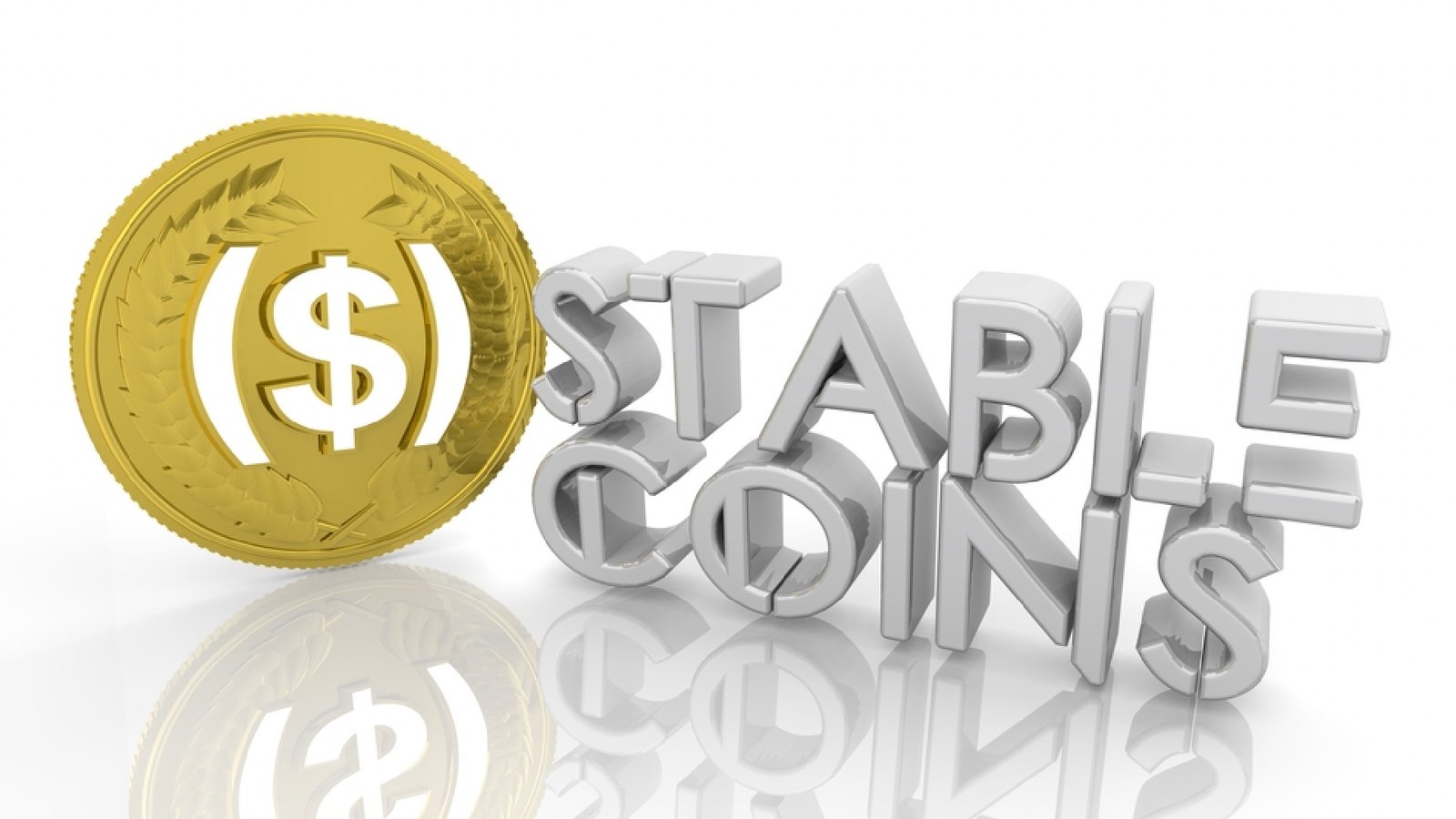
Volatility and cryptocurrencies go hand in hand, that much is certain. Stablecoins, however, are a unique class of cryptocurrencies that are meant to provide a constant price.
A stablecoin is a type of cryptocurrency whose value is tied to the cost of another item, hence the name “stable.” For instance, a stablecoin linked to the US dollar or the Australian dollar should always be valued at $1 of the corresponding currency if it is operating properly.
How does Hedging Work? What is it?
Hedging is a risk management tactic used by traders to lessen investment losses. By simultaneously placing many wagers in various directions, traders can reduce the likelihood of suffering big losses.
Hedging has long been a popular risk management strategy among cryptocurrency dealers in the financial markets. It enables you to keep your investments at their original value even during unfavorable market conditions (without significantly profiting). Cryptocurrency hedging restricts the possible returns on your cryptocurrency investment while protecting your assets from market fluctuations. It is better for risk-averse crypto traders to lose all of their money owing to market volatility.
You may maintain the value of your investments regardless of the way the market moves, whether the market raises in price (pumps) or lowers in price (dumps), by hedging your crypto assets to stable coins (for example, keeping USDT on the Flux app).
How Do Stablecoins Work?
In contrast to the rapidly changing value of many other cryptocurrencies, stablecoins are a specific kind of cryptocurrency intended to maintain a consistent value over time. They do this by linking the value of their product to a more reliable asset, such as the US dollar. They try to prevent extreme volatility while providing all the advantages of cryptocurrencies.
The overall market value of cryptocurrencies may fluctuate by billions of dollars per day. Even the most popular cryptocurrency, Bitcoin (BTC), is prone to severe price swings. Investors have observed a daily shift in the value of BTC of about 4% during the previous month. A stable coin is a cryptocurrency as well, but its value is linked to another asset or a generally stable asset, such as gold or the US dollar.
Companies that introduce stable coins keep a reserve of the backed asset. It is expected of a cryptocurrency corporation launching a stablecoin tied to the US dollar to keep a reserve of dollars in its openly auditable accounts equivalent to the volume of the cryptocurrency released.
In DeFi, where users may lend or borrow stablecoins on credit markets like Aave or give them as liquidity on DEXs like Uniswap, their use has expanded. In addition to facilitating investment possibilities, they offer a simple means of exchange for traders to enter and exit positions without switching back to fiat. By retaining their earnings in a fiat-pegged currency, merchants may trade swiftly and reduce the dangers of price volatility.
However, it becomes clear that there aren’t many options if you look more closely at fiat-pegged stablecoins. Regarding market share, Tether, USD Coin, and Binance USD account for over 90%. Given that all three stablecoins are pegged to the US dollar, one would wonder why the Euro is so hardly important in DeFi. There are principally two causes for this:
MiCA and the digital euro are subject to regulatory uncertainty.
A negative deposit rate at the ECB made storing cash prohibitively expensive (it is now positive).
Stablecoins Fall into three Basic Groups:
Tokenized Currencies (like USDC), in which a central organization maintains currency and cash equivalents like money market funds and enables the token’s holder to exchange it for fiat money.
On-chain collateralized Stablecoins (such as DAI), in which cryptocurrency is put in a smart contract as security and the smart contract then issues a stablecoin to the depositor.
Algorithmic Stablecoins (such as UST), in which the governance token (such as LUNA) serves as collateral and the peg is ensured using arbitrage.
On-chain collateralized Stablecoins (such as DAI), in which cryptocurrency is put in a smart contract as security and the smart contract then issues a stablecoin to the depositor.
Algorithmic Stablecoins (such as UST), in which the governance token (such as LUNA) serves as collateral and the peg is ensured using arbitrage.
How Stablecoins Are Utilized:
Stablecoins give investors the flexibility to invest in and withdraw from various cryptocurrencies while still remaining in the cryptocurrency space.
These coins provide instantaneous transfers and minimal costs, two advantages of cryptocurrencies, without the drawback of volatility. That implies investors can hold them without being concerned about wildly fluctuating portfolio values.
International bank transfers are one of the main applications for stablecoins. Traditionally, this would call for FX conversions with a number of institutions and middlemen. In contrast to a stablecoin transfer, which would be quick and have minimal or no fees, this approach would then include a number of steps, and various costs, and would frequently take a few business days to complete.
How Stablecoins Are Profitable:
The simple charging of redemption and issuance fees is the primary revenue stream for stablecoin issuers.
Following that, it frequently varies according to the type of stablecoin. For centralized issuers, this need to generate revenue fuels the debate over reserves’ openness, as was previously mentioned. The fact that investors holding such stablecoins are exposed to counterparty risk is seen by many as the disadvantage of the centralized scheme.
Counterparty risk is the likelihood that the other party to the asset may fail to fulfill their end of the bargain and break the contract. Decentralized stablecoins, however, offer different revenue models depending on the protocol.
The sale of voting control tokens for the stablecoin’s future or the depositing of money into blockchain-based smart contracts to earn interest are common instances. However, there is risk associated with these stablecoin issuer investments. The stablecoin issuer must make a decision.
Do Stablecoins Protect Against Inflation?
Since most fiat currencies are not backed by tangible goods or resources, they are vulnerable to inflation. Fiat money may be created by governments and central banks, so as more of it circulates, its value gradually declines.
So why would stablecoins act as an inflation hedge? It’s crucial to understand that not every fiat currency has the same level of price stability. Due to their comparatively low inflation rates, “stronger” fiat currencies like the US dollar (USD) or Euro (EUR) are typically more coveted. Simply put, nations with stable or expanding economies frequently have fiat currencies that are more resistant to inflation.
On the other hand, a large number of the world’s fiat currencies have significant rates of inflation, which makes them poor units of value. Hyperinflation, or monthly inflation of more than 50%, might occasionally prevent people from being able to accumulate money or amass wealth. People who are dealing with local currency inflation could find it challenging to convert their money into a more powerful fiat currency, such as the US dollar.
Stablecoins are useful in this situation. Anyone with an internet connection can easily buy stablecoins in many parts of the world.
Interest Rates on Stablecoins are So High:
Stablecoin production is continually outstripped by demand. However, because DeFi protocols reduce economic rents, stablecoin interest rates are higher than those of fiat currencies. The high-interest rates are also necessary to encourage investors to supply liquidity for these systems. (The rates should decrease as the TVL of these protocols rises.)
Stablecoin liquidity-requiring cryptocurrency exchanges charge high-interest rates to entice new lenders. Trading platforms are prepared to give users greater interest rates for stablecoins because they keep their pegged value. Exchanges typically provide lower interest rates for other altcoins because of their high price volatility, which makes them a riskier store of value. A cryptocurrency like ETH has interest rates that vary from 5% to 8%. Stablecoins, however, frequently carry interest rates of 10% or higher.
How to use Stablecoins as an Inflation Hedge:
A significant issue for fiat currencies is inflation. The choices made by their individual governments and central banks about their separate fiscal policies determine the value of the US dollar, the euro, or even the Japanese yen.
The level of public confidence affects a country’s currency value as well. (“Fiat” literally translates as “It shall be” in Latin, meaning that the value of a country’s currency is determined by its government.) If people lose trust in the government that issues the currency, it could become worthless. Due to their high levels of inflation, many fiat currencies have minimal purchasing power when compared to stronger ones.
Inflation is protected by stablecoins in the following ways. Converting a local currency that has declined in value into a stable international currency could be challenging using conventional banking procedures.
However, stablecoins let anyone with an internet connection buy a 1:1 fiat-equivalent asset from any location. The tokens are intended to always be priced in accordance with their assigned currency. As a result, a stablecoin based on the US dollar always modifies its peg to reflect the value of the US dollar.
These stablecoins can be kept even during periods of extreme volatility and exchanged for cash as needed. Stablecoins enable people to maintain their purchasing power with the fewest constraints possible as a result.
Inflation is Protected by Stablecoins Hedge in the Following Ways:
Converting a local currency that has declined in value into a stable international currency could be challenging using conventional banking procedures.
However, stablecoins let anyone with an internet connection buy a 1:1 fiat-equivalent asset from any location. The tokens are intended to always be priced in accordance with their assigned currency. As a result, a stablecoin based on the US dollar always modifies its peg to reflect the value of the US dollar.
These stablecoins can be kept even during periods of extreme volatility and exchanged for cash as needed. Stablecoins enable people to maintain their purchasing power with the fewest constraints possible as a result.
Conclusion:
A stablecoin has uses beyond just being a medium of exchange. It is the growth of conventional, unreliable cryptocurrencies as well as payment systems.
It is a brand-new kind of electronic money. equivalent financial benefits to fiat currencies and is controlled by algorithms as opposed to a centralized authority. The usage of digital assets in daily life may become more widespread thanks to stablecoins, which are by their very nature stable assets.
However, authorities are looking towards alternative forms of regulation due to the hazards connected with stablecoins. The Biden administration declared that it wanted to regulate stablecoin issuers similarly to banks at the beginning of 2022. Responsible innovation and financial stability depend on stablecoins being regulated effectively. Before stablecoins pose a risk to the health of the financial system and the smooth operation of payment systems, appropriate regulation, oversight, and control must be implemented. New stablecoins require the establishment of a regulatory framework, and existing stablecoins urgently need to be brought into the regulatory perimeter.
Algorithmic stablecoins should be handled as unbacked crypto-assets to account for their unique risks. Stablecoins are utilized as a form of payment, hence regulatory frameworks must provide further clarification in regards to other matters including data privacy, consumer protection, market integrity, AML/CFT, and tax laws.
Global parity will need to be ensured at the international level by a consistent, detailed, and strong regulatory approach. This covers both the regulation of stablecoins in and of itself as well as the regulation of traditional financial sector exposures to stablecoins.
FAQs:
What Sort of Stablecoins are Those?
A certain asset or group of assets is intended to have a steady value in relation to stablecoins, a sort of cryptocurrency. The well-known stablecoins Tether (USDT), USD Coin (USDC), and DAI are among the examples. Both Tether and USD Coin have a 1:1 value relation with the US dollar because they are tethered to that currency. On the other hand, DAI is an illustration of a stablecoin that is crypto-collateralized and is backed by other cryptocurrencies like Ethereum.
Bitcoin: Is it a Stablecoin?
Unlike stablecoins, bitcoin is not one. The price of Bitcoin, a particular kind of cryptocurrency, constantly fluctuates based on the state of the market. In contrast, stablecoins are intended to retain a stable value in relation to a single item or group of related assets.
Ethereum: A Stablecoin or Not?
Ethereum isn’t a stablecoin, sorry. Like Bitcoin, the cryptocurrency Ethereum (ETH) is renowned for its price volatility. Ethereum also offers a platform for smart contract execution and the development of decentralized apps (dApps). Transaction costs for transactions on the Ethereum chain are paid using the system’s native cryptocurrency, ETH. Stablecoins, in contrast to Ethereum, attempt to maintain a stable value and are frequently anchored to a reliable asset like the US dollar.






